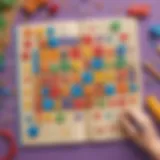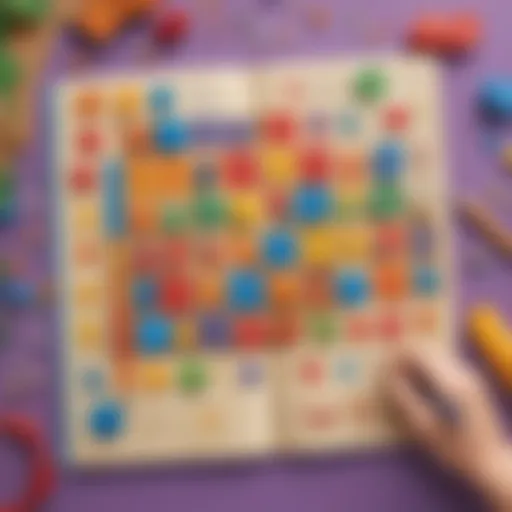Engage Young Minds with Creative Earth Day Activities for 1st Graders
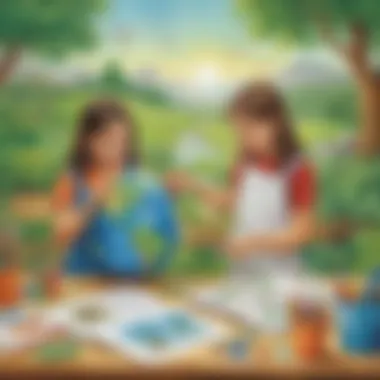

Creative Activities
When it comes to engaging 1st graders in Earth Day activities, fostering creativity is key. Craft ideas play a significant role in making learning fun and interactive. Children can explore making DIY bird feeders using recycled materials such as plastic bottles and popsicle sticks. By engaging in this hands-on activity, young learners not only contribute to wildlife conservation but also enhance their fine motor skills and understanding of sustainability. Step-by-step guides are essential to ensure children can easily follow along and complete the craft independently. Providing detailed instructions on each step from gathering materials to assembling the final product helps in promoting a sense of accomplishment among 1st graders. The educational value of such activities goes beyond the crafts themselves. It instills in children a sense of responsibility towards the environment and sparks curiosity about different ways to protect our planet for future generations.
Fun Quizzes
Incorporating fun quizzes into Earth Day activities for 1st graders adds an element of excitement and challenges young minds in a playful manner. Quiz topics can range from simple concepts like recycling and energy conservation to more complex ideas like climate change and biodiversity. Quiz questions can vary in types, including multiple-choice, true or false, and fill-in-the-blank, catering to different learning preferences and enhancing engagement. The quizzes serve as a knowledge reinforcement tool by offering immediate feedback and explanations for correct answers, supporting continuous learning and retention of environmental concepts. Whether conducted in classrooms or virtually through interactive platforms like Elem Fun, these quizzes make learning about Earth Day both entertaining and educational for 1st graders.
Fact-Based Articles
For a comprehensive understanding of environmental issues and conservation efforts, fact-based articles serve as valuable resources for 1st graders. Covering a diverse range of topics such as endangered species, water conservation, and renewable energy, these articles present information in an engaging and easy-to-understand manner. Through simple language, colorful illustrations, and relatable examples, young readers can delve into complex environmental topics with clarity and insight. Additionally, including links to additional resources allows children to further explore specific areas of interest and expand their knowledge beyond the articles presented. By providing access to dependable information in a reader-friendly format, fact-based articles contribute to building a strong foundation of environmental awareness and sustainable practices in 1st graders.
Introduction
Importance of Earth Day Education
The importance of Earth Day education cannot be overstated, particularly when it comes to shaping the values and attitudes of young children. At its core, Earth Day education instills in youngsters a sense of connectedness with nature and an understanding of their role as caretakers of the environment. 1st graders, in their formative years, are like sponges eager to soak up knowledge and experiences. By introducing them to the concepts of Earth Day, we lay a strong foundation for their future environmental awareness.
By recognizing the significance of Earth Day, children develop a reverence for the natural world and acknowledge the impact of their actions on the environment. Through engaging activities like planting trees, creating nature-themed crafts, and participating in eco-friendly games, kids not only have fun but also absorb crucial lessons about sustainability and conservation. Earth Day education goes beyond mere theoretical learning; it fosters a sense of stewardship and instills a lifelong commitment to respecting and preserving our planet.
Environmental education at a young age cultivates a mindset of sustainability and ecological responsibility. Providing 1st graders with hands-on experiences and interactive projects related to Earth Day sets the stage for them to become eco-conscious citizens. As we navigate this ever-changing world, nurturing a generation that values and protects the Earth is paramount to ensuring a sustainable future for all living beings.
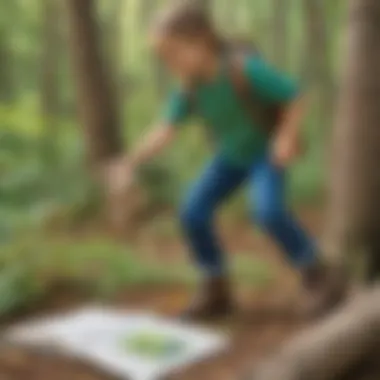
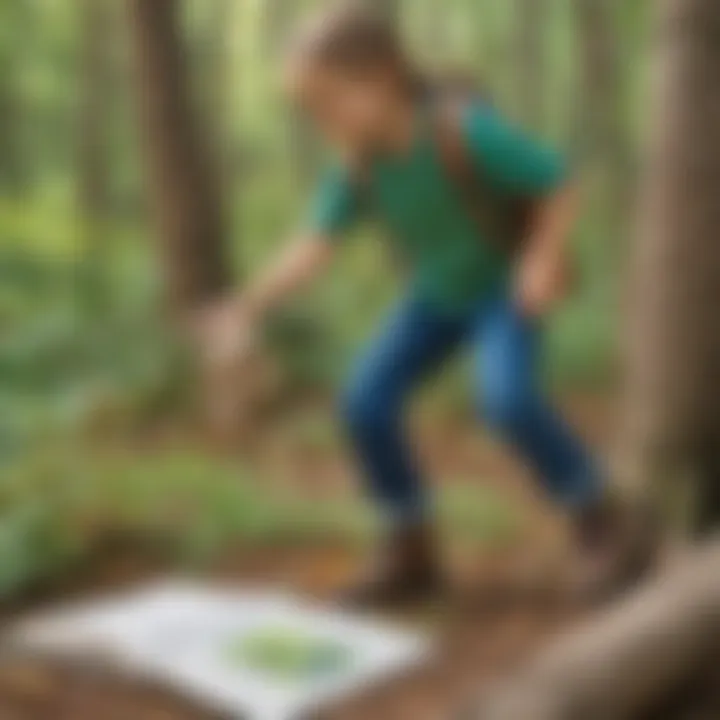
Outdoor Activities
Planting a Tree
Planting a tree holds profound significance in environmental education for children. This activity not only teaches 1st graders about the importance of trees in combating climate change but also instills a sense of responsibility towards caring for the Earth. By involving children in tree planting, they understand the lifecycle of plants and the vital role trees play in providing oxygen and shelter for various creatures. Additionally, planting a tree fosters a sense of accomplishment and ownership in the child, nurturing a connection with nature that goes beyond the act of planting itself.
Nature Scavenger Hunt
Embarking on a Nature Scavenger Hunt introduces 1st graders to the wonders of the natural world in an interactive and engaging manner. This activity encourages children to observe, explore, and appreciate the diverse elements of their environment. Through scavenger hunts, kids develop their observation skills, learn to identify various plants and animals, and understand the interconnectedness of ecosystems. Moreover, Nature Scavenger Hunts spark curiosity and enthusiasm in young learners, igniting a sense of wonder and discovery as they uncover the hidden treasures of nature.
Creating a Butterfly Garden
Creating a Butterfly Garden is a magical activity that captivates the imagination of 1st graders while promoting biodiversity and habitat conservation. By planting nectar-rich flowers and hosting plants that serve as caterpillar host sites, children contribute to the preservation of butterfly populations. This hands-on experience allows kids to witness the life cycle of butterflies up close, fostering an understanding of metamorphosis and the delicate balance of nature. In addition to being educational, Creating a Butterfly Garden instills a sense of environmental responsibility in children, empowering them to make a positive impact on their surroundings.
Craft Activities
Craft activities play a crucial role in this article as they provide an avenue for 1st graders to engage with Earth Day concepts creatively. Engaging in craft activities helps young learners develop fine motor skills, boosts creativity, and fosters a sense of accomplishment. Additionally, craft activities promote sustainability by utilizing recycled materials and emphasizing the importance of resourcefulness. When planning craft activities for 1st graders, it is essential to consider age-appropriate tasks, safe materials, and clear instructions to ensure a successful and enjoyable learning experience.
DIY Bird Feeders
DIY bird feeders are a fantastic way to merge creativity with environmental awareness. By crafting bird feeders, 1st graders can learn about the needs of local wildlife while actively participating in nature conservation. These projects promote empathy towards animals, develop patience, and instill a sense of responsibility in caring for the environment. When creating DIY bird feeders, it's essential to use bird-friendly materials, such as natural seeds and biodegradable components. Encourage children to observe bird behavior and reflect on the impact of their actions on the ecosystem.
Recycled Art Projects
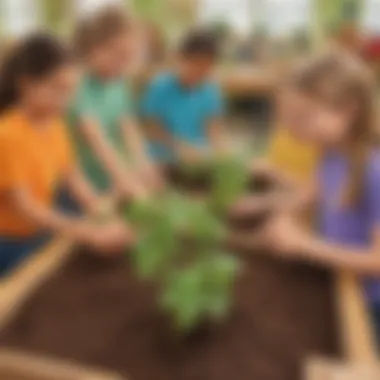
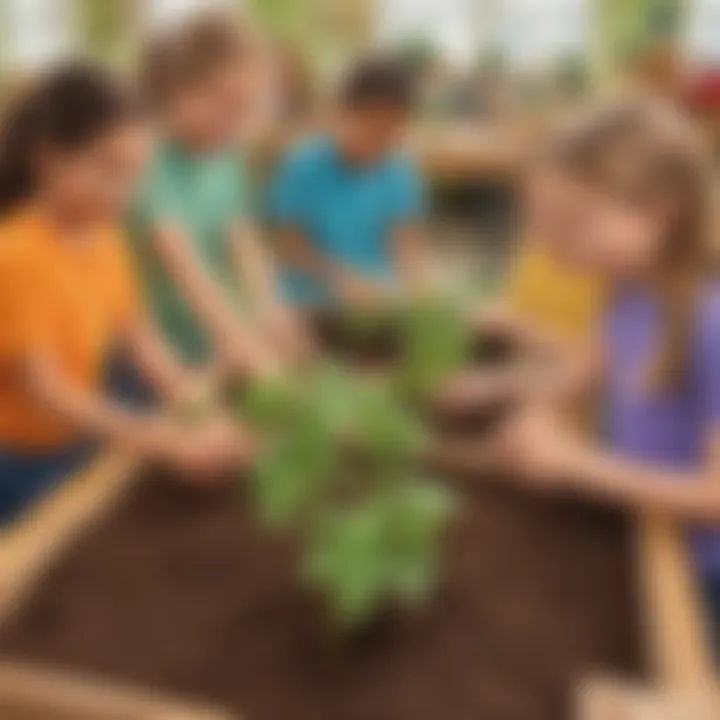
Engaging in recycled art projects introduces 1st graders to the concept of upcycling and waste reduction. Through these activities, young learners can explore their creativity while understanding the value of repurposing materials. Recycled art projects also encourage critical thinking by challenging students to envision new uses for discarded items. When embarking on recycled art projects, emphasize the importance of sustainability, resource conservation, and environmental stewardship. Encourage children to reflect on the environmental benefits of reducing waste through art.
Seed Bombs Crafting
Crafting seed bombs provides 1st graders with a hands-on experience in ecological restoration and biodiversity conservation. Seed bombs are an innovative way to rewild urban spaces and support pollinators. By creating seed bombs, children learn about native plant species, habitat restoration, and the role of plants in supporting ecosystems. When engaging in seed bomb crafting, focus on using locally adapted seeds, organic materials, and choosing appropriate planting locations. Encourage children to witness the growth of plants from seed bombs and understand the significance of their actions in fostering a green environment.
Educational Activities
In the realm of educational activities for 1st graders on Earth Day, there lies a crucial avenue for instilling environmental awareness in young minds. These activities serve as the foundation for nurturing a sense of responsibility towards our planet and its conservation. By engaging in educational activities, children not only learn about environmental concepts like recycling, conservation, and sustainability but also develop a deeper understanding of how their actions can impact the world around them. It's essential to tailor these activities to be age-appropriate, interactive, and informative to capture the attention and curiosity of young learners.
Earth Day Bingo
Earth Day Bingo represents a creative and engaging way to introduce 1st graders to environmental concepts while having fun. Through this game, children can familiarize themselves with terms such as 'renewable energy,' 'biodegradable,' or 'compost' in a playful setting. These bingo cards can be customized to include images and simple descriptions related to Earth Day, making the learning experience visually stimulating and interactive. Not only does Earth Day Bingo help in expanding vocabulary and knowledge about environmental issues, but it also promotes teamwork, critical thinking, and attention to detail among the participants.
Environmental Storytime
Environmental Storytime opens the door to a world of eco-conscious narratives that spark imagination and cultivate a love for nature in young readers. By introducing stories that revolve around themes like conservation, wildlife protection, and ecosystem preservation, children can develop empathy towards the environment and its inhabitants. Reading environmental tales aloud not only enhances literacy skills but also fosters discussions around sustainability and the interconnectedness of all living beings. Additionally, incorporating interactive elements such as props, role-playing, or group discussions can further enhance the storytelling experience and deepen the impact of the stories on young minds.
Recycling Sorting Game
The Recycling Sorting Game serves as a hands-on approach to teaching 1st graders about waste management, recycling practices, and the importance of reducing, reusing, and recycling. By engaging in this game, children learn how to differentiate between various types of waste, understand the significance of segregating recyclables, and grasp the environmental benefits of proper waste disposal. This activity not only educates children about the tangible actions they can take to reduce their ecological footprint but also empowers them to become proactive stewards of the environment. Through interactive gameplay and real-life examples, the Recycling Sorting Game brings abstract concepts of sustainability into a concrete and relatable context for young learners.
Interactive Projects
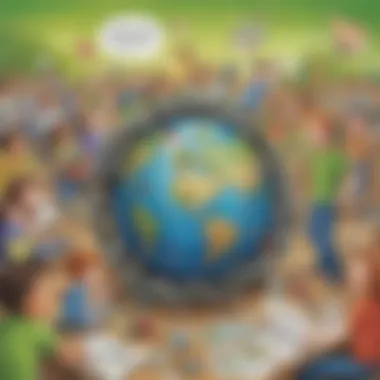

In this section, we delve into the significance of Interactive Projects in the context of engaging 1st graders in Earth Day activities. Interactive Projects play a crucial role in fostering active participation and experiential learning among young learners. By incorporating hands-on activities that allow children to explore environmental concepts firsthand, Interactive Projects create a dynamic learning environment that promotes curiosity and critical thinking. These projects not only enhance cognitive development but also instill a sense of responsibility towards the environment at an early age. Moreover, Interactive Projects serve as an effective tool for sparking creativity and imagination in children, encouraging them to think innovatively about ecological issues. It is essential to carefully design Interactive Projects that are age-appropriate, stimulating, and aligned with educational objectives to maximize their impact on 1st graders.
Virtual Field Trips
Virtual Field Trips offer a unique opportunity for 1st graders to explore diverse ecosystems and geographical regions from the confines of their classroom. Through immersive virtual experiences, children can witness the wonders of nature, observe wildlife habitats, and gain a deeper appreciation for the Earth's biodiversity. Virtual Field Trips not only supplement traditional learning methods but also give students a glimpse into real-world environmental conservation efforts. By virtually visiting national parks, forests, and other natural landscapes, children can broaden their understanding of ecological systems and learn about the importance of preserving these delicate environments. Educators can enhance the Virtual Field Trip experience by incorporating interactive quizzes, discussions, and follow-up activities that reinforce key learning objectives and stimulate meaningful engagement among students.
Digital Earth Day Journals
Digital Earth Day Journals provide 1st graders with a platform to document their reflections, observations, and ideas related to environmental sustainability. These interactive journals enable children to express their thoughts creatively through text, images, and multimedia elements. By maintaining Digital Earth Day Journals, students can chart their eco-conscious journey, track environmental changes in their surroundings, and set personal sustainability goals. Journals can also serve as valuable tools for self-assessment and peer-sharing, fostering a sense of community among young learners engaged in Earth Day activities. Educators can guide students in journaling best practices, such as effective storytelling, data recording, and visual representation, to enhance their overall learning experience and encourage a deeper connection to nature.
Green Screen Presentations
Green Screen Presentations offer an innovative way for 1st graders to create and share educational content related to Earth Day themes. By using green screen technology, students can transport themselves virtually to different locations, interact with digital backgrounds, and deliver dynamic presentations on environmental topics. This interactive approach not only enhances children's communication skills but also boosts their confidence in public speaking and storytelling. Green Screen Presentations allow students to showcase their creativity, research findings, and advocacy efforts in a visually captivating manner, making complex environmental concepts more accessible and engaging. Educators can support students in scriptwriting, presentation setup, and post-production editing to ensure that Green Screen Presentations are informative, compelling, and aligned with learning objectives.
Conclusion
In the realm of Earth Day activities for 1st graders, the conclusion serves as the culminating moment, bringing together the essence of environmental education and engagement that these activities impart to young minds. It acts as a vital component that solidifies the importance of instilling values of conservation and sustainability from a tender age. By reflecting on the experiences gained through the various outdoor, craft, educational, and interactive projects, the conclusion paves the way for a lasting impact on the children's understanding of their role in protecting the planet.
The Conclusion section acts as a platform to reinforce key learnings through a summary of the activities undertaken. It underlines the significance of such initiatives in shaping eco-conscious citizens of the future. By emphasizing the interconnectedness of all living beings and our environment, the conclusion instills a sense of responsibility and stewardship in the young participants, motivating them to be proactive in preserving the Earth for generations to come.
Wrapping Up Earth Day Celebrations
As we approach the culmination of Earth Day celebrations, the Wrapping Up Earth Day Celebrations section encapsulates the essence of the event and its significance in inspiring young minds towards environmental advocacy. It symbolizes a moment of reflection and consolidation, where the various activities and initiatives undertaken throughout the day converge to leave a lasting impression on the participants.
In this segment, the focus lies on summarizing the key takeaways from the Earth Day activities, highlighting the educational and emotional impact they have had on the 1st graders. It provides a space for children to articulate their thoughts and feelings about the day's events, fostering a sense of accomplishment and empowerment in being champions of the environment.
Additionally, the Wrapping Up Earth Day Celebrations section encourages children to share their experiences with their peers and families, extending the ripple effect of environmental awareness beyond the confines of the classroom. It prompts discussions on environmental topics, such as the importance of recycling, conservation of natural resources, and protecting wildlife, fostering a deeper understanding of the interconnectedness of ecological systems.
Furthermore, this segment acts as a catalyst for continued learning and action, igniting a passion for environmental stewardship that transcends the boundaries of age. As the Earth Day celebrations draw to a close, the Wrapping Up Earth Day Celebrations section sets the stage for ongoing engagement with nature, inspiring children to be mindful of their impact on the planet and to actively participate in preserving its beauty and biodiversity.
